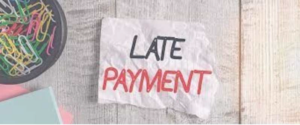Do Customers Consider Your Invoices a Tier One or Tier Two Payable?
The economic climate in 2023 has dramatically changed in comparison to recent years, and is continuing to evolve as this country faces inflation, rising interest rates and other economic uncertainties.
The cost of product spiking up in 2022, coupled with the increase in bank interest rates, has created an uncomfortable change in petroleum companies’ cash flow, including accounts receivable exposure and risk. Many customers are feeling the same pinch, and have potentially reacted by changing their own payment habits to more closely manage their companies’ cash flow.
A simple question to ask yourself is: do your own customers consider your company a tier one or tier two payable? This is a mindset or pattern created through the evolution of the ongoing business relationship. When a customer changes their payment habits by slowing down payables, and nothing much happens on the fuel supplier side, the customer has just been given permission to make delayed payment the status quo. Achieving a few extra days of float with those vendors that “don’t seem to mind” can be a very effective way to reduce the cost of money. The good news is, you can impact and change that behavior and your company’s payables position.
Let’s take a look at the definition of these two positions:
- Tier One Payable – Customers know their credit terms and have your invoices set up to pay on or before the due date preferably through electronic payment. Billing/invoicing problems are addressed by the customer in a timely manner before the invoices are past
- Tier Two Payable – Customers aren’t concerned with credit terms and pay their invoices when it best suits their own closely managed cash flow. Because they don’t feel much heat from paying when they choose, they have been given complete permission to pay when it’s convenient. These customers likely consider themselves to be good customers.
The best way to elevate your payables from Tier Two back up to Tier One is with quick, transparent communication. This is the way to be certain your customers understand your requirement to be paid as they originally agreed when signing the credit application.
A worthwhile project is to take a look at customers consistently paying from 10 to 15 days after their due date. These are the sure- to-pay but slow-to-pay that no one gets much heartburn about. Once identified, set your ERP software to send an automated, friendly reminder at about day three. If payment isn’t received quickly, a phone call should happen five days after the email. Quick, friendly reminders about payments due should not be considered bad business or being too tough on the customer. What these quick reactions can accomplish is retraining your customers about your expectation, and their initial agreement, of when they would pay for product.
If a slow payer is ignoring collection efforts, in-person visits by upper management is also extremely effective. These meeting can be very customer friendly, starting with a thank-you for the business, while at the same time discussing past due invoices and terms of payment going forward. It’s a good time to ask whether there is anything within our own business systems that are keeping invoices from being paid on time. What can we do to help get these invoices processed before they go past due?
Setting the tone with customers that you are in a truly reciprocal business partnership with them is a great way to stay connected in a mutually beneficial manner.


Ann Pitts
817.304.1533

